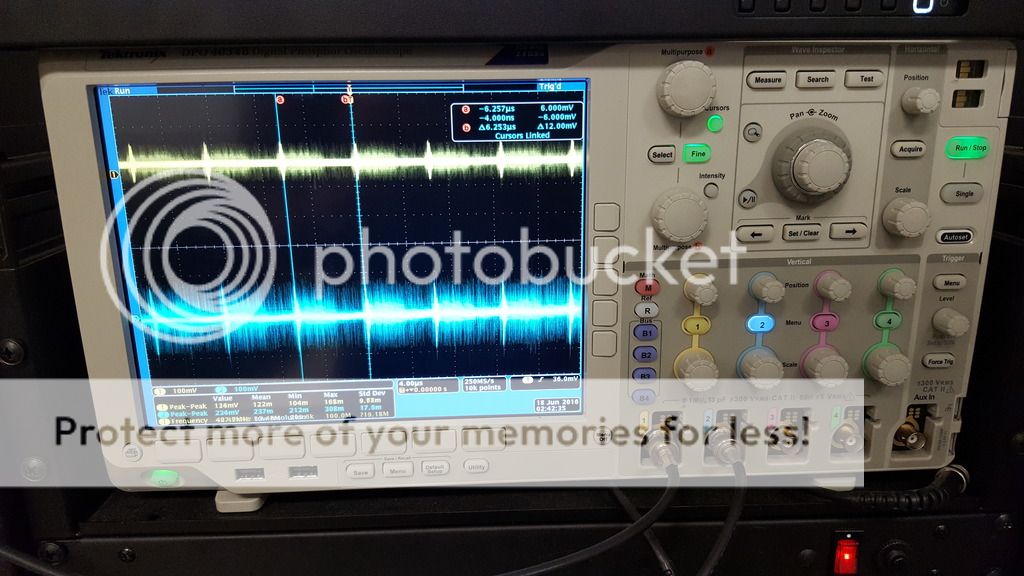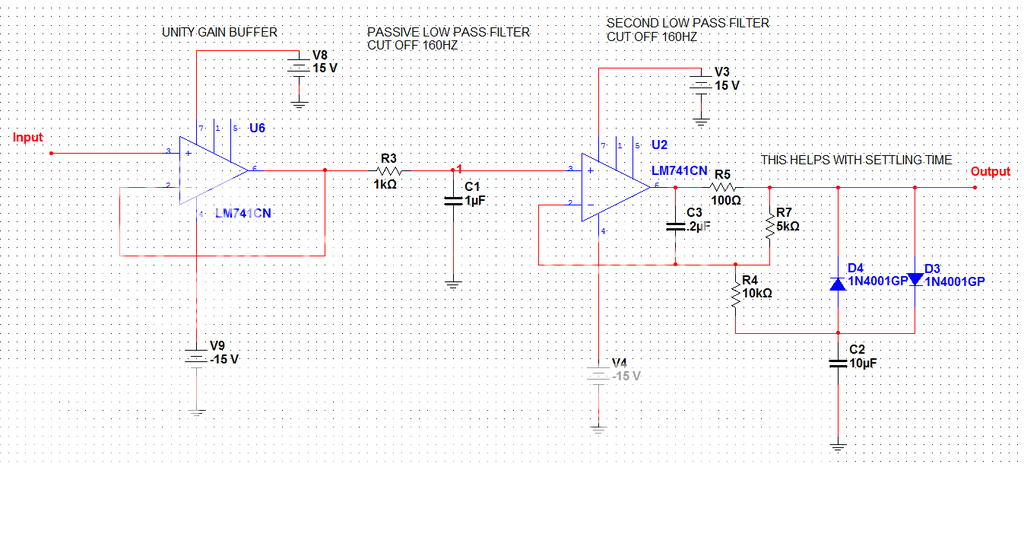Armando Maldonado
New Member
I have a -10VDC to +10VDC signal coming into a PC. This signal is generated by a sensor that is measure very small movements. As the sensor is moved inward and outward the resistance changes causing a DC voltage anywhere inbetween -10V and +10V.
The excitation of the sensor is creating some high frequency noise. I am building a filter that contains an unity gain buffer opamp and a simple second order passive RC low pass filter.
The filter is working well and I'm getting a clean DC voltage but there is a significant delay between the input and the output of the filter. It takes milliseconds for the output to reflect the input.
What ways can I minimize the delay?
Thank you!
The excitation of the sensor is creating some high frequency noise. I am building a filter that contains an unity gain buffer opamp and a simple second order passive RC low pass filter.
The filter is working well and I'm getting a clean DC voltage but there is a significant delay between the input and the output of the filter. It takes milliseconds for the output to reflect the input.
What ways can I minimize the delay?
Thank you!


